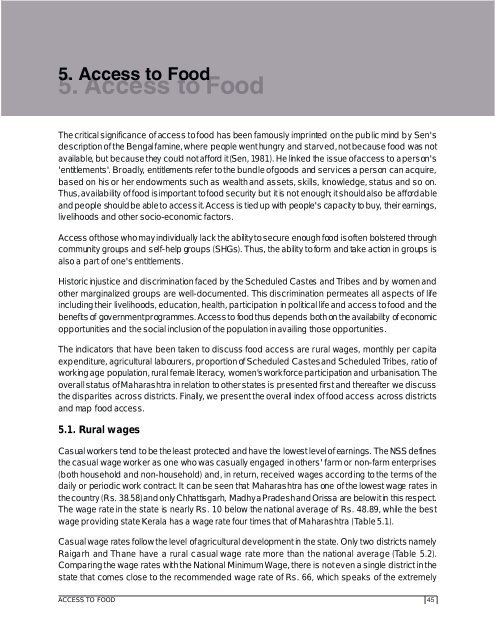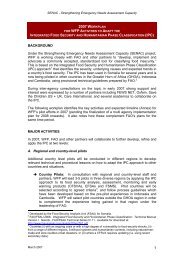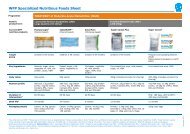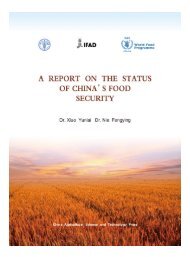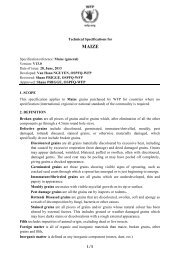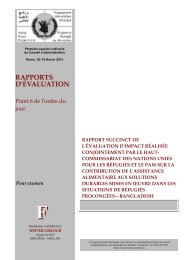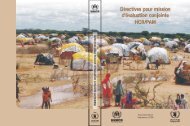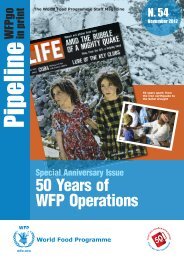Food Security Atlas Of RURAL MAHARASHTRA - WFP Remote ...
Food Security Atlas Of RURAL MAHARASHTRA - WFP Remote ...
Food Security Atlas Of RURAL MAHARASHTRA - WFP Remote ...
You also want an ePaper? Increase the reach of your titles
YUMPU automatically turns print PDFs into web optimized ePapers that Google loves.
5. Access to <strong>Food</strong>5. Access to <strong>Food</strong>The critical significance of access to food has been famously imprinted on the public mind by Sen'sdescription of the Bengal famine, where people went hungry and starved, not because food was notavailable, but because they could not afford it (Sen, 1981). He linked the issue of access to a person's'entitlements'. Broadly, entitlements refer to the bundle of goods and services a person can acquire,based on his or her endowments such as wealth and assets, skills, knowledge, status and so on.Thus, availability of food is important to food security but it is not enough; it should also be affordableand people should be able to access it. Access is tied up with people's capacity to buy, their earnings,livelihoods and other socio-economic factors.Access of those who may individually lack the ability to secure enough food is often bolstered throughcommunity groups and self-help groups (SHGs). Thus, the ability to form and take action in groups isalso a part of one's entitlements.Historic injustice and discrimination faced by the Scheduled Castes and Tribes and by women andother marginalized groups are well-documented. This discrimination permeates all aspects of lifeincluding their livelihoods, education, health, participation in political life and access to food and thebenefits of government programmes. Access to food thus depends both on the availability of economicopportunities and the social inclusion of the population in availing those opportunities.The indicators that have been taken to discuss food access are rural wages, monthly per capitaexpenditure, agricultural labourers, proportion of Scheduled Castes and Scheduled Tribes, ratio ofworking age population, rural female literacy, women’s workforce participation and urbanisation. Theoverall status of Maharashtra in relation to other states is presented first and thereafter we discussthe disparities across districts. Finally, we present the overall index of food access across districtsand map food access.5.1. Rural wagesCasual workers tend to be the least protected and have the lowest level of earnings. The NSS definesthe casual wage worker as one who was casually engaged in others' farm or non-farm enterprises(both household and non-household) and, in return, received wages according to the terms of thedaily or periodic work contract. It can be seen that Maharashtra has one of the lowest wage rates inthe country (Rs. 38.58) and only Chhattisgarh, Madhya Pradesh and Orissa are below it in this respect.The wage rate in the state is nearly Rs. 10 below the national average of Rs. 48.89, while the bestwage providing state Kerala has a wage rate four times that of Maharashtra (Table 5.1).Casual wage rates follow the level of agricultural development in the state. Only two districts namelyRaigarh and Thane have a rural casual wage rate more than the national average (Table 5.2).Comparing the wage rates with the National Minimum Wage, there is not even a single district in thestate that comes close to the recommended wage rate of Rs. 66, which speaks of the extremelyACCESS TO FOOD45


